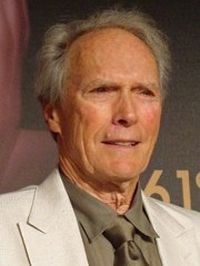How Clint Eastwood Got into Acting

Clint Eastwood, one of Hollywood’s most iconic figures, has a career spanning decades as an actor, director, and producer. Known for his rugged persona and unparalleled storytelling, Eastwood’s journey to stardom wasn’t straightforward. His path to becoming a household name is a story of persistence, self-belief, and a bit of serendipity.
Early Life in California
Born on May 31, 1930, in San Francisco, California, Clinton Eastwood Jr. grew up during the Great Depression. His family moved frequently due to his father’s work, but they eventually settled in Oakland, California. As a teenager, Eastwood worked a variety of jobs, including lifeguard, forest firefighter, and grocery clerk.
Despite his later fame, acting wasn’t initially on his radar. “I wasn’t the guy who was in all the school plays,” Eastwood revealed in an interview with The Hollywood Reporter. “I was just trying to figure out what I wanted to do with my life.”
A Chance Encounter with Hollywood
Eastwood’s introduction to acting came about almost by accident. After serving in the Army during the Korean War, he returned to California and enrolled at Los Angeles City College. While visiting Universal Studios with a friend, Eastwood caught the eye of a casting director. “I had no plans to get into acting,” Eastwood admitted during a 2004 interview. “I was just a guy walking around the lot, but I guess they saw something in me.”
The casting director encouraged him to consider acting, leading Eastwood to take a screen test. Although his early performances were unpolished, his striking looks and natural presence earned him a contract with Universal Pictures in 1954.
Struggles in the Early Years
Eastwood’s early acting career wasn’t glamorous. He landed small roles in forgettable films like Revenge of the Creature (1955) and Tarantula (1955). Reflecting on those days, Eastwood said, “I was just happy to be working, even if the roles weren’t exactly Oscar-worthy.”
He took acting lessons to improve his craft and began networking within the industry. In 1959, his perseverance paid off when he was cast as Rowdy Yates in the TV series Rawhide. The show became a hit and gave Eastwood the exposure he needed to establish himself in Hollywood.
The “Man with No Name” Breakthrough
Eastwood’s transition from television star to movie icon came when he accepted the role of the “Man with No Name” in Sergio Leone’s Dollars Trilogy. The low-budget spaghetti Westerns, starting with A Fistful of Dollars (1964), were initially dismissed by critics but later achieved cult status.
“When I first read the script, I thought, ‘This is different,’” Eastwood said in an interview with Variety. “The character didn’t talk much, but his presence spoke volumes. I knew it was a gamble, but sometimes you have to take risks.”
The trilogy’s success made Eastwood a global star, and his stoic, gritty performances defined a new era of Westerns.
Becoming a Filmmaker
Not content with just acting, Eastwood ventured into directing with Play Misty for Me (1971). “I wanted to tell stories my way,” he explained. “Acting is great, but directing allows you to shape the whole vision.”
His directing career proved as successful as his acting, with films like Unforgiven (1992), Million Dollar Baby (2004), and Gran Torino (2008) earning critical acclaim and Academy Awards.
Lessons from Eastwood’s Journey
Clint Eastwood’s rise to stardom highlights the value of perseverance and adaptability. His success wasn’t immediate, and he faced numerous rejections and setbacks early in his career.
“You have to be patient,” Eastwood advised in a 2020 interview. “Opportunities don’t always come when you want them to, but when they do, you have to be ready.”
An Enduring Legacy
From his humble beginnings to becoming one of the most celebrated figures in cinema, Clint Eastwood’s journey is a testament to resilience and vision. Whether in front of or behind the camera, he has left an indelible mark on Hollywood.
As Eastwood himself says: “The key to success is to stay curious and never stop learning. That’s how you keep moving forward.”



